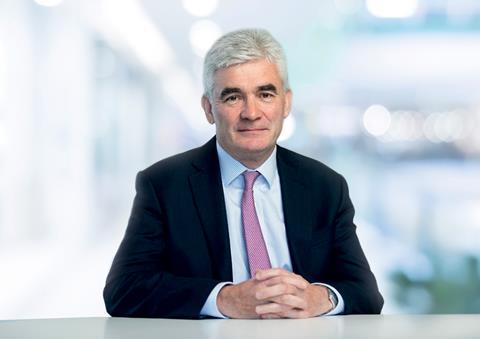Move and sale of housing arm will rake in up to £350m in coming weeks
Kier has said its improving operational performance means the time is right to launch an equity raise to address its crippling debt problem that its latest results show now stands at a month-end average of £436m.
Some analysts had been expecting the firm to hold off following the sale of its Kier Living housing business, announced last week, to a private equity firm run by financier Guy Hands, for £110m. Around £75m of this will be used to cut its debt pile with a further £15m held in cash reserves.

But chief executive Andrew Davies said the firm’s improving operational performance, which saw operating profit from its continuing business edge up 2% to £47.6m in the six months to December 2020, meant now was the time to make the move. Confidence in the business is such that it is targeting a net cash position within the next two to three years.
“We had to fix the operational side of things. The quality of the business is now coming through with these [interim] results and it’s a good time to go to the market,” Davies said.
More details will be released in the coming weeks but the firm is eyeing a raise of between £190m and £240m.
With the proceeds of the Living sale, Davies said that up to £350m could be pumped into the business in the coming weeks, putting the firm on course to hit its net cash target.
“That is totally achievable in the medium term. Half our business is in infrastructure services which is predictable, long-term contracts.”
Average month-end debt during the period increased from £395m and Davies said the restructuring he announced two years ago had put repairing the firm’s balance sheet at its core.
“There’s clearly been a focus on the balance sheet and you cut debt three ways: improve the operating performance of the business, divestment of non-core assets and the third way is an equity raise based on the quality of the operating business.”
Kier went to the markets three years ago under previous chief Haydn Mursell but that equity raise was widely seen as a failure after buyers took up just a third of the new shares for £99m, leaving financial underwriters to mop up the rest at a cost of £164m.
But Davies said: “Operational performance is [now] robust and cashflow is coming through. It simply wasn’t there in the previous equity raise. We had to use funds [raised] to pay down the supply chain and restructure the business.” Its average payment time, which once was 57 days, now stands at 34 days.
Davies said he hoped to wrap up the Living sale by the middle of June – ahead of its year-end later that month – while he added that an improved performance at its property business, which invests and develops schemes and sites across the UK, meant a sale was off the table.
Announcing the decision to sell its housing arm in June 2019, Davies had raised the possibility of selling the property business but he said: “Property is now core and we’ve decided not to sell.”
The firm has returned to HMRC £29m of tax deferred due to the covid-19 pandemic with a balance of £49m left to pay.
Davies added Kier had not claimed any furlough money during the period with the last person coming off the initiative in July. At the peak of the covid crisis, Kier furloughed 2,000 employees and claimed £10m.
Davies said: “Furlough is no fun but it saved 2,000 jobs. I would add £10m is less than the value of the pay reductions of the staff took during the period.”
In the six months to December 2020, operating margins from its continuing business climbed from 2.5% to 2.7% while reported pre-tax profit was £9m from a £41m loss last time. Turnover was down from £1.9bn to £1.6bn.
As well as posting net cash, the firm said other medium-term targets were annual revenues of between £4bn and £4.5bn with operating margins around 3.5%.




























No comments yet